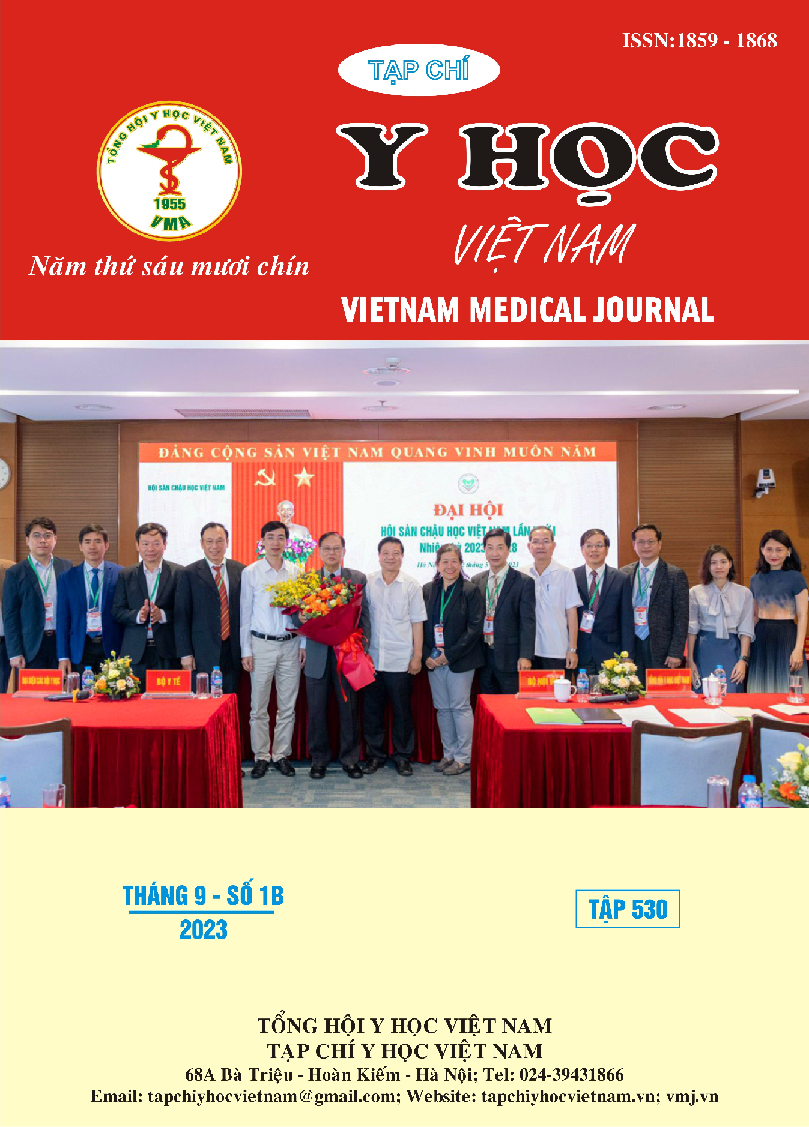EFFECTIVENESS OF HIGH FLOW NASAL CANULA AFTER EXTUBATION ON PATIENTS WITH THE ACUTE EXACERBATION OFF THE CHRONIC OBSTRUCTIVE PULMONARY DISEASE
Main Article Content
Abstract
Objectives: To evaluate the effectiveness of humidified high-flow oxygen nasal canula after extubation in patients with acute exacerbation of chronic obstructive pulmonary disease.Method: A prospective interventional study, all patients eligible for the study was chosen. The patient was applied HFNC immediately after extubation. Clinical indicators and blood gases after extubation were collected. Success of HFNC defined as the patient did not require reintubation or noninvasive ventilation within 48 hours of extubation. The study was conducted from May 2022 to June 2023 at the Center for Critical Care Medicine - Bach Mai Hospital. Results: There were 31 patients participating in the study. In which, there were 28 male patients (90,3%), 3 female patients (9,7%). The mean age was 70,58±9,319 years old, the oldest was 84 years old, the lowest was 49 years old. Most common comorbidities were hypertension (25,8%) and heart failure (22,8%). The success rate was 77,42%. HFNC improved clinical signs on the patients: pulse, respiratory rate, SpO2. The change in blood gas indices such as pH, PaCO2, PaO2 was not statistically significant with p > 0,05 in successful and failed group. The pH and PaCO2 indices were significantly different with p < 0,05 between 2 groups at 30 minutes and 2 hours after extubation. 100% of patients improve their expectoration and sputum properties. Conclusion: HFNC is an effective tool to reduce the risk of re-intubation in patients with COPD exacerbations.
Article Details
Keywords
Extubation, humidified high-flow oxygen, HFNC, COPD.
References
2. Nguyễn Đạt Anh và CS. Những vấn đề cơ bản trong thông khí nhân tạo. Nhà xuất bản y học; 2009.
3. Mè Thị Xuân. Nghiên cứu áp dụng thử nghiệm thôi thở máy 2 phút trước rút ống nội khí quản ở bệnh nhân cấp cứu được thông khí nhân tạo xâm nhập. 2014. Published online 2014.
4. Ni YN, Luo J, Yu H, et al. Can high-flow nasal cannula reduce the rate of reintubation in adult patients after extubation? A meta-analysis. BMC Pulm Med. 2017;17(1):142. doi:10.1186/s12890-017-0491-6
5. Xia M, Li W, Yao J, et al. A postoperative comparison of high-flow nasal cannula therapy and conventional oxygen therapy for esophageal cancer patients. Annals of Palliative Medicine. 2021;10(3):2530539-2532539. doi:10.21037/apm-20-1539
6. Đào Thị Hương, Đỗ Ngọc Sơn. Nghiên cứu áp dụng hệ thống thở oxy lưu lượng cao ở bệnh nhân có nguy cơ phải đặt lại nội khí quản sau rút ống. Luận văn y học; 2017.
7. Tan D, Walline JH, Ling B, et al. High-flow nasal cannula oxygen therapy versus non-invasive ventilation for chronic obstructive pulmonary disease patients after extubation: a multicenter, randomized controlled trial. Crit Care. 2020; 24(1):489. doi:10.1186/s13054-020-03214-9
8. Hernández G, Paredes I, Moran F, et al. Effect of postextubation noninvasive ventilation with active humidification vs high-flow nasal cannula on reintubation in patients at very high risk for extubation failure: a randomized trial. Intensive Care Med. 2022;48(12):1751-1759. doi:10.1007/s00134-022-06919-3
9. Liesching TN, Lei Y. Efficacy of High-Flow Nasal Cannula Therapy in Intensive Care Units. J Intensive Care Med. Published online January 1, 2017:885066616689043. doi:10.1177/0885066616689043
10. Feng Z, Zhang L, Yu H, et al. High-Flow Nasal Cannula Oxygen Therapy versus Non-Invasive Ventilation for AECOPD Patients After Extubation: A Systematic Review and Meta-Analysis of Randomized Controlled Trials. Int J Chron Obstruct Pulmon Dis. 2022;17:1987-1999. doi:10.2147/COPD.S375107
11. Wang G, Wang H, Wang Y, Ba C. Therapeutic effects and the influence on serum inflammatory factors of high-flow nasal cannula oxygen therapy in senior patients with lower respiratory tract infections. Technol Health Care. 2022;30(6):1351-1357. doi:10.3233/THC-213609.


